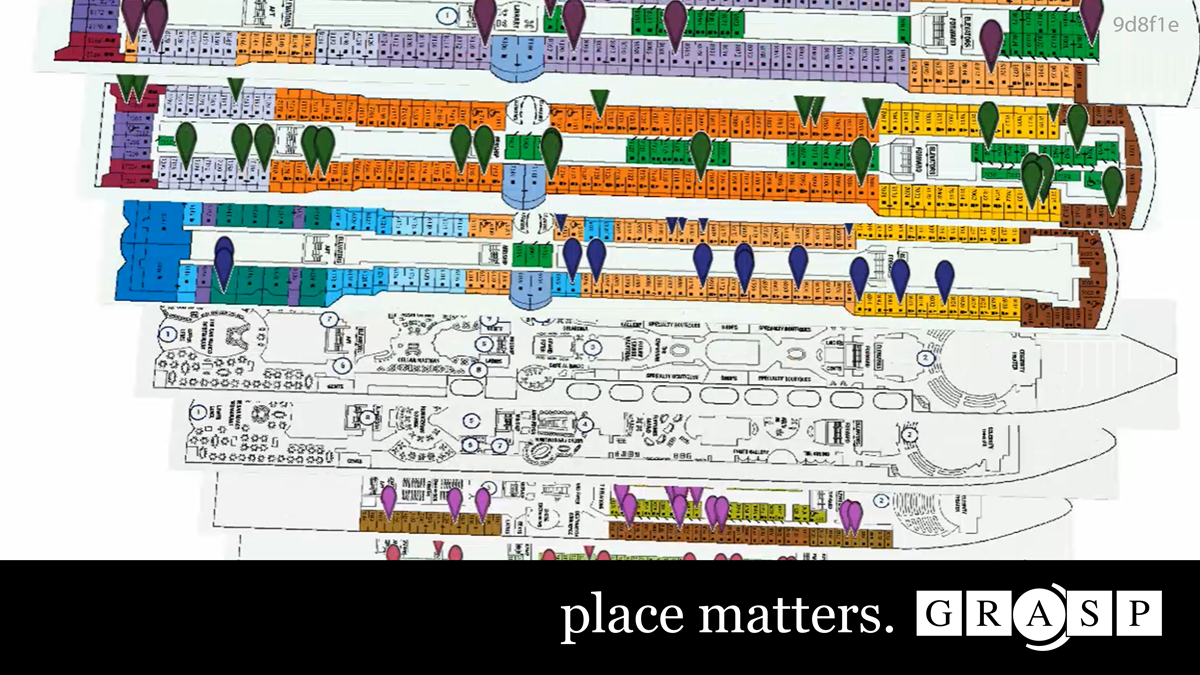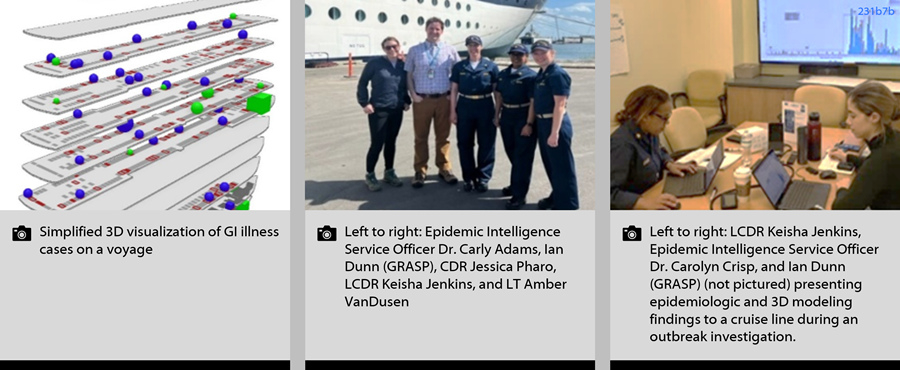At a glance
GRASP collaborates with the Vessel Sanitation Program (VSP) to use three-dimensional (3D) modeling and mapping to provide deeper insights into how illnesses spread on cruise ships.

What to know
Overview
This partnership advances the use of geospatial science, technology, and data to inform the CDC response to disease outbreaks on cruise ships.
Partners: GRASP; National Center for Environmental Health (NCEH) Vessel Sanitation Program (VSP)
GRASP contribution: 3D modeling, geospatial technology, data visualization
Overview
Each year, millions of people travel on cruise ships to enjoy a variety of unique experiences. The CDC Vessel Sanitation Program (VSP) helps the cruise ship industry prevent and control GI illnesses on cruise ships.
VSP works collaboratively with partners in the cruise industry and international public health agencies. Together, they find outbreak causes and modes of transmission, identify effective intervention strategies to stop outbreaks, and provide recommendations to prevent future outbreaks.
VSP partnered with the Geospatial Research, Analysis, and Services Program (GRASP) at the Agency for Toxic Substances and Disease Registry to incorporate three-dimensional (3D) modeling (3D images of the ships decks; see image below) and mapping to gain deeper insights into the spread of illness on cruise ships.

Field investigations to control GI illness outbreaks on cruise ships
When GI illness cases surge beyond a threshold on a cruise, the ship notifies VSP. VSP staff spring into action, investigating the situation to contain the outbreak and prevent further spread. Recently, VSP partnered with GRASP to create 3D models of outbreak data. During these investigations, VSP and GRASP worked with cruise lines to:
- Gather and analyze epidemiological data
- Develop 3D images to visualize different sections of the ship to understand patterns of illness transmission and ensure the use of effective environmental cleaning and disinfection practices
Partnership provides new insights on outbreaks
When GRASP services are requested, staff build a 3D image of the ship and plot outbreak data, including cabins of ill passengers and crew members.
GRASP’s 3D model of the cruise ship helps VSP staff “see” the invisible spread of illness. With a few clicks they can visualize all locations of reported cases—from cabin and restroom locations to decks and common areas. Ship staff can use the visualizations to identify spatial patterns which may assist in mitigating the outbreak.
“VSP looks forward to continue collaborating with GRASP to fully garner the capabilities of 3D modeling in assisting with onboard public health mitigation efforts and outbreak investigations,” says Captain Luis O. Rodriguez, Environmental Health Specialist and Acting Chief for VSP.

